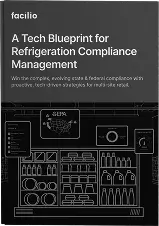Fault Detection and Diagnostics (FDD) tools automate
investigation into the abnormal performance of building
systems. As a core component of Energy Management and
Information Systems (EMIS), these tools simplify energy
analysis and make results more accessible.
Thanks to impressive potential to realize energy savings up to
30%, FDD has captured early interest in an industry that’s
traditionally not very tech-savvy.
In fact, an effective FDD solution not only empowers operators
with independent control and management of their building
performance, but also guides them to make consistent,
data-informed, profitable decisions for their property. In
essence, It can be the gateway to a high-performing, connected
portfolio.
But there are still several bottlenecks slowing its adoption.
There’s a deluge of FDD solutions in the market that come in
all shapes and sizes—from methods to models to
features—resulting in information overload and lack of
clarity for buyers.
Building owners and operators are unsure what to consider
beyond technical features, how to compare the different
approaches, and how to frame the right questions to evaluate
what’s best for their portfolio needs.
This guide will walk you through the fundamental aspects
operations teams should consider when evaluating FDD
solutions—so you can find the right tool for your portfolio.
(Interested to know what technical abilities to look for in an
FDD solution? Find them here)
What are the core attributes to consider?
It’s important to keep in mind that a good FDD solution is
much beyond just a ‘software’. And how it fits in your
business operations impacts what best you can get out of it.
We developed a simple framework to capture key elements that
you can use to assess various FDD solutions. The categories in
the framework touch upon attributes spanning delivery model,
software location, flexibility, operational intelligence, and
total cost of ownership
Let’s discuss each separately.
Choosing an FDD product versus a service should be decided
according to two prime factors— - availability of time, and
technical resources. As the system that predicts and alerts
you to performance anomalies, you should expect your solution
to require
minimal technical expertise.
But technical knowledge is often perceived as an obstacle to
choosing a product over service, and many people believe that
the learning curve on analytics is pretty steep in the former.
(Modern FDD frameworks are fast-evolving to overcome
efficiency bottlenecks—no big picture, lack of control,
specialized skills gap—more on this in a later section).
On the flip side, with an FDD service, you’ll be bound by your
service provider and will miss out on ownership of data for
precise evaluation of your overall operational performance. A
product can give you visibility and freedom to understand
property performance in multiple ways.
Evaluation questions
Do you need technical skills and/or HVAC domain
knowledge to operate the system?
Can the tool be seamlessly installed and maintained
in-house?
Does it allow you to set up a DIY configuration and
control of building data and analytics?
Whether your software resides in the cloud or on-prem should
align with your portfolio’s roadmap—and whether or not you
need improved integration across systems, portfolio-wide
visibility, and/or iterative operating models.
Multi-tenancy support
is a key deciding factor. Although an on-prem solution works
well in a single building scenario, it gets hard when
expanding your portfolio to multiple buildings or customers. A
cloud solution can make scaling effortless.
Advanced FDD solutions are opening up opportunities for owners
to pursue a streamlined, portfolio-wide application, rather
than a cumbersome building-wise deployment. They make it easy
to configure rules across buildings in one go. Owners can
avoid time delays and grappling with system limitations that
are commonplace with a building-by-building setup.
If you opt for an on-prem solution with a multi-tenancy
situation, you should be prepared to install multiple
instances of the software and build the required support
system in your operations.
Evaluation questions
Does the tool offer a unified view of all your
performance information—across systems and buildings—in
one place?
Is it possible to quickly and easily add more data or
buildings to your portfolio analytics?
Flexibility in Analysis
If your building has evolving monitoring demands and different
energy projects in scope, you’ll stand to benefit from
flexible FDD solutions. In this context, the scope of data
ownership and ease of rule configuration deserve special
mention.
Data Ownership:
This is a key consideration that’s often lost in the milieu of
FDD features while evaluating a suitable solution. There’s
often little to no clarity on who owns the building data. Why
is this important? Access to business intelligence from
analytics insights is critical. But ownership of the
underlying data is just as crucial for your portfolio growth.
When you own your building data, you can
Back up and/or export data as you need
Clearly demonstrate your buildings’ efficiency
Precisely evaluate how your energy initiatives have fared
Discover patterns and get a complete picture of the outcomes
in the context of your property strategies
Consider a case of peak energy usage. Your FDD solution must
be equipped to correlate performance data and alarm frequency
to give insights on which equipment needs urgent repair or
replacement. That way, you can contextually tie managerial
decisions to energy savings.
Rule Configuration:
Existing FDD solutions present an interesting mix of rule
configuration capabilities. Some give you limited,
pre-configured rules; some are user-configurable but require
complex code-based scripting; while a few offer powerful
configurations that are also intuitive.
When it comes to an FDD product, this data is usually “under
the hood,” and end-user configurability is anything but
smooth. Despite providing analytics, these tools often lead to
vendor dependency—and your operating freedom suffers. With no
control over existing rules, your chance to add rules based on
historical data slips away.
A service provider applies rules over your building data to
give you insights on your building issues—comfort, mechanical
inefficiencies, faulty equipment, etc. But you have no
ownership of historical data, and rule intelligence.
Evaluation questions
Can you access the historical performance of your
building?
Can you drill down into the performance of specific
equipment?
Do you have access to the rule library?
Does the tool require the vendor to make any upgrades?
Do the rule changes require complex code scripting or
help from the vendor?
Ease of Switching
What happens if you are not quite happy with your existing FDD
solution and would like to switch? While most building owners
and operators are eager to adopt a more competent FDD
solution,the sheer complexity and data risks during transition
deter them from evolving with changing needs.
To safely restore historical context and build on top of the
latest analytics, you need a robust solution that offers
migration out-of-the-box—and gets your operations back up and
running smoothly in no time.
Evaluation questions
How easy is data migration? Does it require additional
infrastructure?
Is it possible to export historical data (including
rules and configurations) in flexible ways?
Does the migration involve downtime or risk of data
loss?
Operational Intelligence
Reporting: It takes
enormous effort to consolidate and understand FDD findings in
real-time—so creating and sharing reports is a significant
feature to look for while evaluating FDD solutions.
To maximize the impact of your operational efforts, it’s
essential that you’re able to communicate results and share
relevant data-driven insights in a timely fashion. .Instead of
squeezing in an extra tool to fill the gaps in reporting or
integrating with other solutions, FDD products can help you
overcome major reporting challenges with in-built capabilities
that allow you to easily share reports with intended
stakeholders.
Analytics: To shed
light on key operational blind spots—such as 'Which equipment
is failure-prone?’ or ‘What equipment is consuming a lot of
energy in each building?'—you need to be able to drill down
into KPIs and other key information. It's important to
evaluate if your FDD solution extends beyond fault
identification and allows you to
define, monitor, and report on KPIs.
Evaluation questions
Can you easily share analytics insights with key
stakeholders?
Is it possible to explore beyond faults and monitor
operational KPIs?
Total Cost of Ownership
When it comes to choosing a suitable FDD solution, don’t
forget to consider the total cost of ownership (TCO). For most
FDD solutions, there’s much more to TCO than the upfront
purchase cost.
It’s important to know if the solution comes with a bunch of
technical requirements that could drive up your cost:
Apart from installation, configuration, and maintenance, some
products charge for updates/enhancement.
Some tools require considerable effort for rule development
in the form of scripting. Customization to meet
property-specific needs calls for additional work for
desired visualization and workflows.
Only HVAC technicians can operate most FDD solutions. On top
of it, some tools also require the technical staff to
complete additional training.
Consequently, your budget is stretched thin.
Without the hassles of system installation and maintenance, a
cloud solution has the upper hand on ease of configuration.
It’s also designed to smoothly accommodate the future growth
of your portfolio.
Evaluation questions
Is there a need for a dedicated technical resource for
configuration?
What is the expected spend on training and support?
Are additional costs incurred for rule configuration,
duplication or data migration?
Is the vendor charging for upgrades or customization?
The more end-user-friendly solutions have typically taken the
buyer’s needs into consideration throughout the product
adoption process—and therefore usually offer the best TCO, as
well.
Going beyond analytics—Unified, cloud-based controls maximize
efficiency
It is largely understood that there’s immediate value in using
data and analytics to identify and address inefficiencies in
building operations. But it’s becoming increasingly obvious
that while these are useful insights,
it’s difficult to convert findings to real-time operational
changes or actions.
For this,
You need a strong mechanism that integrates FDD and building
operations to Control & Command Automation Systems—in
real-time. This integration expands the scope of
efficiencies—from energy alone to portfolio control, such as
commands based on space scheduling, occupant-driven app-based
controls, and so on.
Choosing the right FDD solution today can be the strong
foundation you need to enable system-wide decision making and
optimization across your portfolio in the foreseeable future.
FDD in Facilio
Facilio’s Centralized FDD engine proactively detects and
diagnoses inefficiencies in building asset and energy
performance across a portfolio of buildings. Unlike
traditional BMS-dependent FDD systems, Facilio’s cloud-based
FDD engine is seamlessly tied to operational workflows and
unites all stakeholders (from mobile and on-site teams to
command center experts and facility decision-makers).



